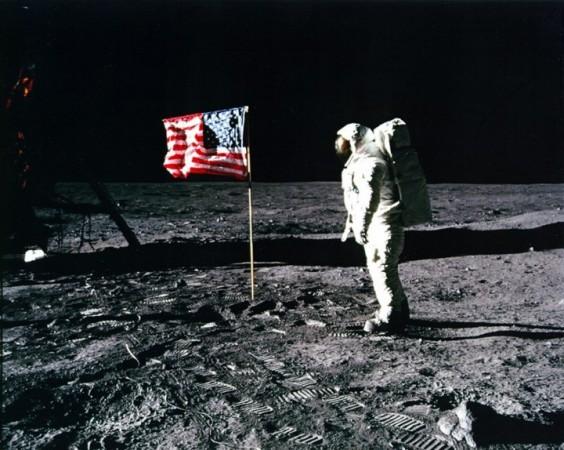
Today marks the 45th anniversary of the launch of Nasa's historic moon mission on 16 July 1969.
Changing the course of human history, astronauts Neil Armstrong, Michael Collins and Edwin "Buzz" Aldrin Jr were sent into space. Four days later, Armstrong, closely followed by Aldrin, left the lunar module Eagle and walked on the surface of the moon.
History of launch day
On 16 June 1969, Saturn V launched Apollo 11 from Launch Pad 39A at the Kennedy Space Centre, at approximately 9.32am EDT local time.
Thousands of people crowded highways and beaches near the launch site, while millions watched the event unfold on television. President Richard Nixon viewed the take-off from the Oval Office of the White House.
The shuttle entered orbit 12 minutes later and after one and a half orbits, the S-IVB third-stage engine pushed the spacecraft onto its trajectory towards the moon.
Half an hour later, the command/service module pair separated from this last remaining Saturn V stage, and docked with the Lunar Module still nestled in its Adaptor.
After the Lunar Module was extracted, the combined spacecraft headed for the Moon, while the third stage booster flew on a trajectory past the Moon and into heliocentric orbit.
On 19 July, Apollo 11 passed behind the moon and fired its service propulsion engine to enter lunar orbit.
In the thirty orbits that followed, the crew saw passing views of their landing site in the southern Sea of Tranquility about 12 miles southwest of the crater Sabine D.
The landing site was selected in part because it was relatively flat and unlikely to present major landing or extra-vehicular activity (EVA) challenges.
On 20 July 1969, the Lunar Module Eagle separated from the Command Module Columbia.
Facts about the moon mission
- There is only one direct photograph of Armstrong actually on the Moon, as most of the famous shots are of Aldrin. Aldrin denied speculation that this was because he was upset about having come second.
- Armstrong took the first steps on the Moon but Aldrin was the first to urinate there, into a special bag within his suit.
- Buzz Aldrin's father, Edwin Aldrin, was a good friend of Orville Wright - one of the famous brothers who built and flew the world's first airplane.
- Aldrin left a small olive branch on the moon, along with an Apollo 11 patch and two Russian cosmonaut medallions, to honour those killed during the space race. He almost forgot to leave them, until he was reminded by Armstrong and left them en route back to the command module.
- The Command Module pilot Michael Collins had been originally slated to pilot Apollo 8. However he was replaced by Jim Lovell after he had surgery on his back. He took what would have been Lovell's spot on Apollo 11.
- The astronauts also had to use a biro to replace the re-ignition switch to send them back into space after Aldrin accidentally broke it.
- Aldrin and Armstrong left behind a retroreflector array which is still used by scientists today to measure the distance between our planet and the Moon. Each day, laser beams are shot towards the Moon from the Apache Point Observatory in New Mexico.
- The American flag they placed near the Command Module was blown over by the downdraft when they launched back into space, according to Buzz Aldrin.
- Aldrin, a Presbyterian Christian, had communion on the Moon. It was kept secret from the public as Nasa was fighting a lawsuit by athiest Madalyn Murray O'Hair - who objected to the Apollo 8 crew reading from the Book of Genesis.
- When landing the Eagle, Armstrong had to navigate over an unexpected boulder field, landing the craft with 20 seconds of fuel left.

















